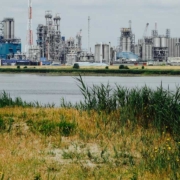Supply chains first lessons by Covig-19
Now that the WHO speaks of a pandemic, the alarmist and uncertain character is increasing. Each new report offers hardly any clues as to which measures can best be taken. It does compel companies to think about the robustness of their supply chains
China
Wuhan, which was the first city to actually get caught by the virus, is a center of the steel industry. It is the center of companies such as Nissan, Honda but also IBM, Honeywell. The city of 11 million inhabitants is a dominant point in many supply chains. It is not without reason that international business immediately held its heart when the city went into lockdown. Many parts in many supply chains, from production, assembly or finishing, pass or originate in this city.
Supply chains can often absorb stronger fluctuations due to stock formation in the chain, but the problem is the unpredictability of distribution and the duration of the epidemic and now even pandemic. And this outbreak in China is further complicated by Trump’s ongoing trade war against China.
Since Trump started his trade war, many companies have already taken the first steps to move their production locations to countries such as Indonesia or the Philippines. However, given the rapid and wide distribution, this will only offer limited relief.
Stages epidemic
One of the lessons to be learned from epidemics is the different phases of a country and the fact that depending on its distance from the source, other countries are in a different phase. 1
Due to this shift, one country can still function properly while the other country is in lockdown. Depending on the duration, this image may turn around. As can now be seen that China is slowly recovering and becoming operational again, Europe is yet to expect the worst effects.
The other effect that needs to be considered is the reaction of the consumer. Is this hoarding, will your supply chain stock be drained or is there a loss of demand? And also this customer demand response can differ per infected region depending on the phase of the epidemic / pandemic.
Consumer behavior
Now that the pandemic continues for longer as a result of the lockdown measures, the consumer will not only temporarily change his behavior, but this can also take on a structural nature on several points. Think of buying online. Buying online was already on the rise, but is now taking a bird’s eye view. Consumers are now “forced” to buy products online where they were previously reluctant. Local sourcing will also increase as people become more aware of their impact on their environment and they want to support their local entrepreneurs out of solidarity.
There are clear changes in Branding and marketing. Companies see how much corporate social responsibility appeals to the imagination of consumers. Such as providing goods without obligation to aid or care organizations or, for example, food banks. Companies that think along with their customers, for example by not playing “hardball” when it comes to direct debits, also see their appreciation increase sharply. A culture change is imminent.
All of this should be a wake up call for supply chain professionals to ensure a good international spread of sourcing, manufacturing and stock locations. But also for senior management and board to review their strategy. Even though the lockdown will come to an end at some point, that doesn’t mean we’re going back to business as usual. Regardless of whether we want to return to that situation.








